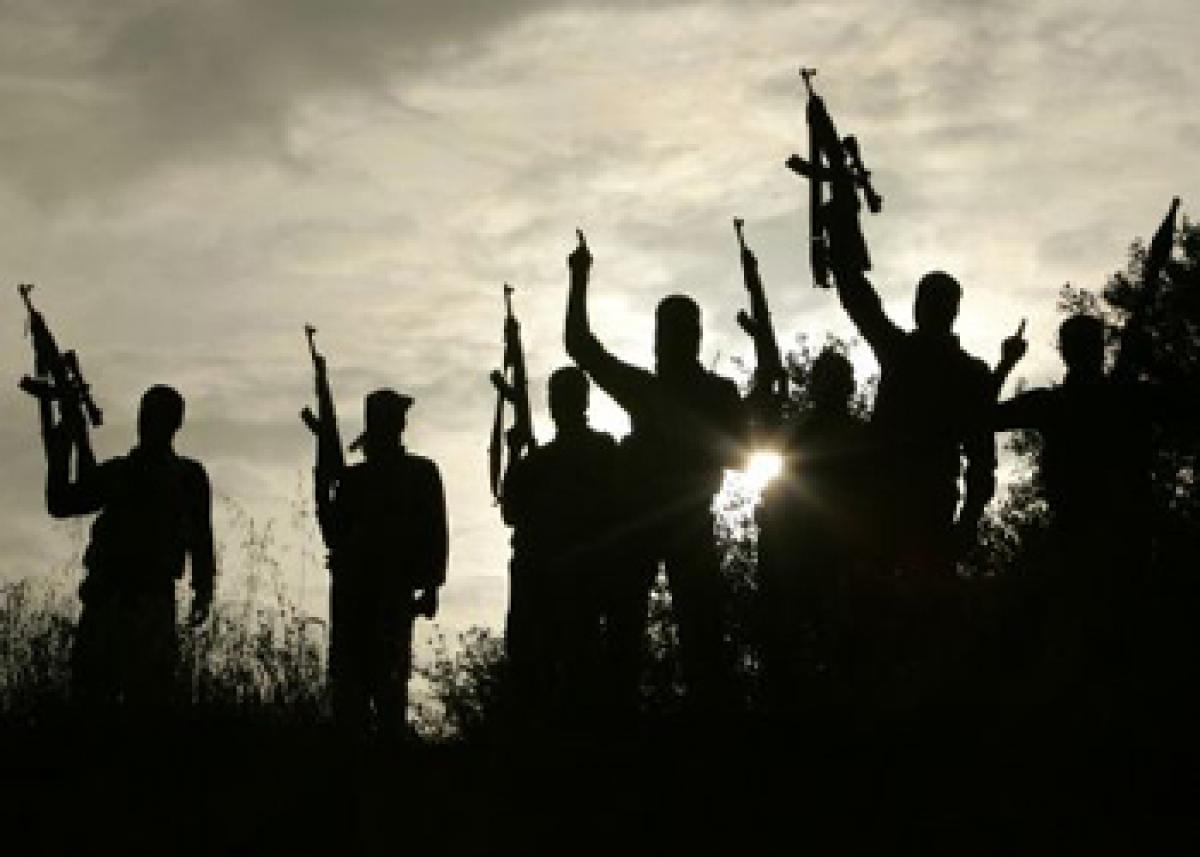Live
- Mandal Level CM Cup Sports Concludes in Ija with Promising Talent and Enthusiastic Participation
- Harish Rao Slams Revanth Reddy: "More Talk, Less Action"
- Revolutionising Oil and Gas: Gaurav Kumar Sinha’s AI-Driven Innovations Transforming Efficiency and Profitability
- Vishal Jain to head AiDASH facility
- Congress Central Election Committee has finalised the names of around 20 candidates for the upcoming Delhi Assembly elections
- District Collector Adarsh Surabhi has ordered to expedite the land acquisition process related to irrigation projects in the district
- Economics and Public policy gets new platform in Bengaluru
- Residents Demand Action After Accidents Highlight Poor Road Safety Measures
- Rahul Gandhi Visits Hathras Victim's Family, Slams BJP For Injustice
- Nitin Gadkari Admits India's Road Safety Crisis, Urges Change In Human Behavior And Infrastructure
Just In

Naga peace accord: Why Now. The Naga Peace Accord, a framework agreement as it has been termed, signed between the National Socialist Council of Nagalim-Isak-Muivah (NSCN-IM) and the Government of India on August 3 is significant for several reasons.
.jpg) The Naga Peace Accord, a framework agreement as it has been termed, signed between the National Socialist Council of Nagalim-Isak-Muivah (NSCN-IM) and the Government of India on August 3 is significant for several reasons.
The Naga Peace Accord, a framework agreement as it has been termed, signed between the National Socialist Council of Nagalim-Isak-Muivah (NSCN-IM) and the Government of India on August 3 is significant for several reasons.
First, it shows the flexibility and realism of the NSCN (IM) in terms of the willingness to alter goals, from complete sovereignty and Greater Nagalim to acceptance of the constitutional framework albeit with a provision for the grant of greater autonomy to Naga inhabited areas outside of Nagaland through the establishment of autonomous district councils.
This indeed had been a sticking point in negotiations as Arunachal Pradesh, Assam, and Manipur had categorically stated their opposition to any territorial division. Second, the signing of the accord at this moment in time discloses that the platform of social support for the NSCN (IM) comprising Naga civil society groups are insistent on a peaceful path to conflict resolution.
The accord arrived at now ends the ceasefire process in existence since 1997 and locks in the NSCN (IM)’s commitment to peaceful dialogue. The urgency to get a peace deal breakthrough had risen in the backdrop of the rival NSCN (K) abrogating its cease-fire with the Government of India on March 27, 2015, and following it up with the June 4 ambush in Manipur that killed 20 military personnel.
Third, the leaders of the NSCN (IM), Thuingaleng Muivah and Isak Chisi Swu (who has been unwell for some time now), have been forthcoming since 2011 to sign a framework agreement that pledges to preserve the culture, history and traditions of the Nagas and grants greater autonomy to Naga inhabited areas outside of Nagaland. Fourth, Modi’s own promise to resolve the Naga conflict within an 18 months’ timeframe must have been a factor in the signing of the framework agreement.
If the news about a non-territorial resolution framework agreement holds true (details of the Accord are yet to be released), then it is worth deep consideration by Arunachal Pradesh, Assam and Manipur. It would enable them to maintain the territorial status quo while only giving up developmental privileges in their Naga inhabited areas to a new Naga non-territorial body.
A non-territorial resolution framework also favours the Nagas as their core demands – such as recognition of their “unique history” and culture, Naga leverage over deciding the development path for the Naga inhabited areas, etc. – are met through the grant of greater autonomy.
This is an optimal solution that would address the concerns of all the relevant parties. For the Indian government too, it results in recognizing the Naga’s “unique” history and culture within the territorial and sovereign framework of the Constitution.
The fact that such a non-territorial resolution package had gained wide acceptance in Nagaland can be discerned from the fact that former Chief Minister Neiphiu Rio along with all 60 Nagaland State Assembly Members including MLAs of the Opposition parties came out in support of such a framework in the year 2012.
Being politicians, none of these MLAs would have openly supported such a framework had there been no support for it in Naga society. A resolution of one of the oldest armed ethnic conflicts in the Northeast offers a way forward to resolving many other ethnic conflicts in the region such as those involving Kukis, Meiteis, Bodos, Dimasas, Hmars, and Karbis.
The recent Bodo violence in Assam against immigrant minority communities only highlighted the dangers of an ethnically slanted territorial council that failed to safeguard the physical security of minorities in Bodo inhabited areas. In that light, a non-territorial resolution framework is perhaps the only feasible outcome to the multiple ethnicity-driven conflicts in Northeast India.
By Namrata Goswami

© 2024 Hyderabad Media House Limited/The Hans India. All rights reserved. Powered by hocalwire.com







